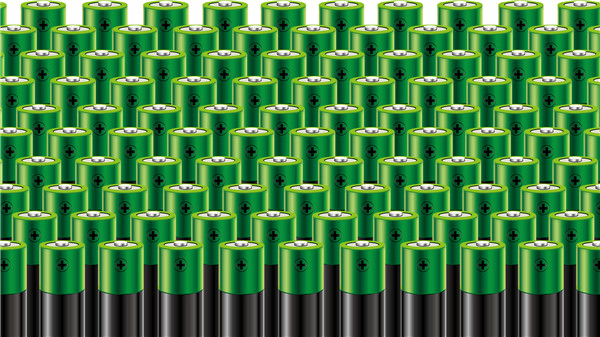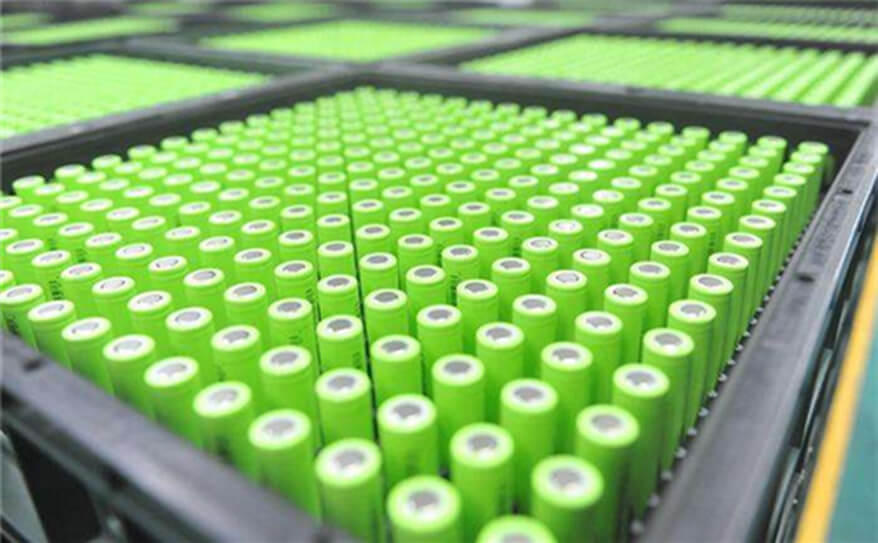Discharge 18650 Battery Discharge Method and Discharge Protocol
Mar 30, 2020 Pageview:9152
What is the easiest way to discharge single 18650 batteries?
Generally speaking, a discharge cycle is defined as the full discharge of a fully or partially charged battery with subsequent recharge. However, this is not the most accurate definition of the discharging process. Batteries are rarely fully discharged. When manufacturers want to rate batteries including the 18650 Lithium ion batteries, they use the 80% depth-of-discharge (DoD) formula. What that basically means for the 18650 Lithium ion battery is that; 80% of the capacity of the battery is actually being used (discharged), while 20% is stayed as a reserve charge to protect the battery from entering the deep sleep mode.
One of the best ways to safely discharge a 18650 battery is to use a heavy load on it. Like using the battery to operate an LED light. That way you can safely discharge the 18650 batteries. However, there are some precautions you should follow for the discharging process to be safe:
Keep the battery cool.
Watch the temperature of the battery closely.
Stop the discharging process immediately if you feel the battery got too hot.
Monitor your battery using something like a hobby charger to make sure you do not over-discharge the battery.
Another option to discharge the 18650 battery is to connect it to a hobby charger and choose the discharge option. That way you can monitor the voltage and the capacity of the battery at all times. It is the safest way to discharge your battery.
Can you discharge for 18650 chargers?
Like mentioned before, you can use a charger to discharge your 18650 battery. One of these chargers is the hobby charger.
A hobby charger, also known as RC charger. is a multi-purpose charger that is designed to perform different tasks. It is a field-use charger. Some hobby chargers come with their power supply and can be power supplied directly from main outlets. However, most hobby chargers need external stabilizers that help to stabilize low voltage supply.
Hobby charger has many charges and discharge features:
It provides fast charging for various Lithium ion batteries types.
It can provide slow charging for various Lithium ion batteries types.
provides a normal Pb charge.
Measures the internal resistance inside of the batteries.
Measures the capacity of the batteries connected to it.
It can safely discharge batteries including 18650 batteries.
It has a regenerative discharge option.
Do you know a typical discharge protocol of a 18650 battery?
Batteries are energy storing devices. They are used to store energy then release it when needed. 18650 Lithium ion batteries have advantages over other types of batteries as they have more capacity, longer life cycles, and are safer than other types.
The amount of time it took a 18650 battery to charge depending on its capacity. The capacity of 18650 batteries ranges from 2300 mAh to 3600 mAh. The higher the capacity, the longer the battery runs and also the longer it would take to charge. To put it into perspective, a 2600 mAh 18650 battery would take approximately 4 hours to charge, while a 3500 mAh would take around six hours to fully charge.
On the other hand, the discharging process of the 18650 battery is another story. The time it would take for a 18650 battery to discharge depends on various factors. Of these factors:
How often are the 18650 batteries recharged?
How much are they cared for?
What type of load do you put on them?
There is no protocol per se for the 18650 batteries to follow. As all Lithium ion batteries, 18650 batteries would die eventually. The very act of charging and discharging the battery is what eventually kills Lithium ion batteries. The lifespan of a 18650 battery depends on the number of times the battery is being charged. In the discharging process, as time passes, the cathode inside of the battery gets damaged slowly. That act causes all Lithium ion batteries to lose around 20% of their capacities. Even the highest-rated Lithium ion batteries go through that phase.
One of the recommended things to do for your 18650 battery is to use it until it reaches 50%, then you recharge it. However, make sure it is not recommended to make it reach 100% every time.
It is important to remember that all Lithium ion batteries, including 18650 batteries will drain over time. This is a fact you have to deal with. After all, the chemical reaction inside of the battery never stops, it only slows down when not being used. The other thing you need to know is that; never over discharge your 18650 battery until it dies. Doing so will make your battery enters a state called "deep discharge" state. In this state, the battery will not allow any charge to be added to its capacity no matter what you do. If your battery reached that state, it is recommended that you take it to a professional, as charging it while in this state may be dangerous and could cause a fire.
Another thing to consider is the charger used. Never use unauthorized chargers or chargers from unknown manufacturers. Only use the compatible ones. If you used an incompatible charger with your 18650 battery it could result in explosion and fire.
There are some precautions you should follow for the discharging process to be safe:
Keep the battery cool.
Watch the temperature of the battery closely.
Stop the discharging process immediately if you feel the battery got too hot.
Monitor your battery using something like a hobby charger to make sure you do not over-discharge the battery.
If you see the voltage of your battery drop below the recommended level, remove it immediately from the device and contact your local shop.
If during the discharging process you see smoke coming from the battery, unplug it at once, cover it with something that cannot catch fire and call a professional to help you.
If the battery catches fire during the discharging process, call help immediately.
- Prev Article: Lithium Ion Battery Full Discharge Recharge Method and Fully Discharge Result
- Next Article: Lithium Deep Cycle Batteries for Solar
Leave Message
Hottest Categories
-
Hottest Industry News
-
Latest Industry News












